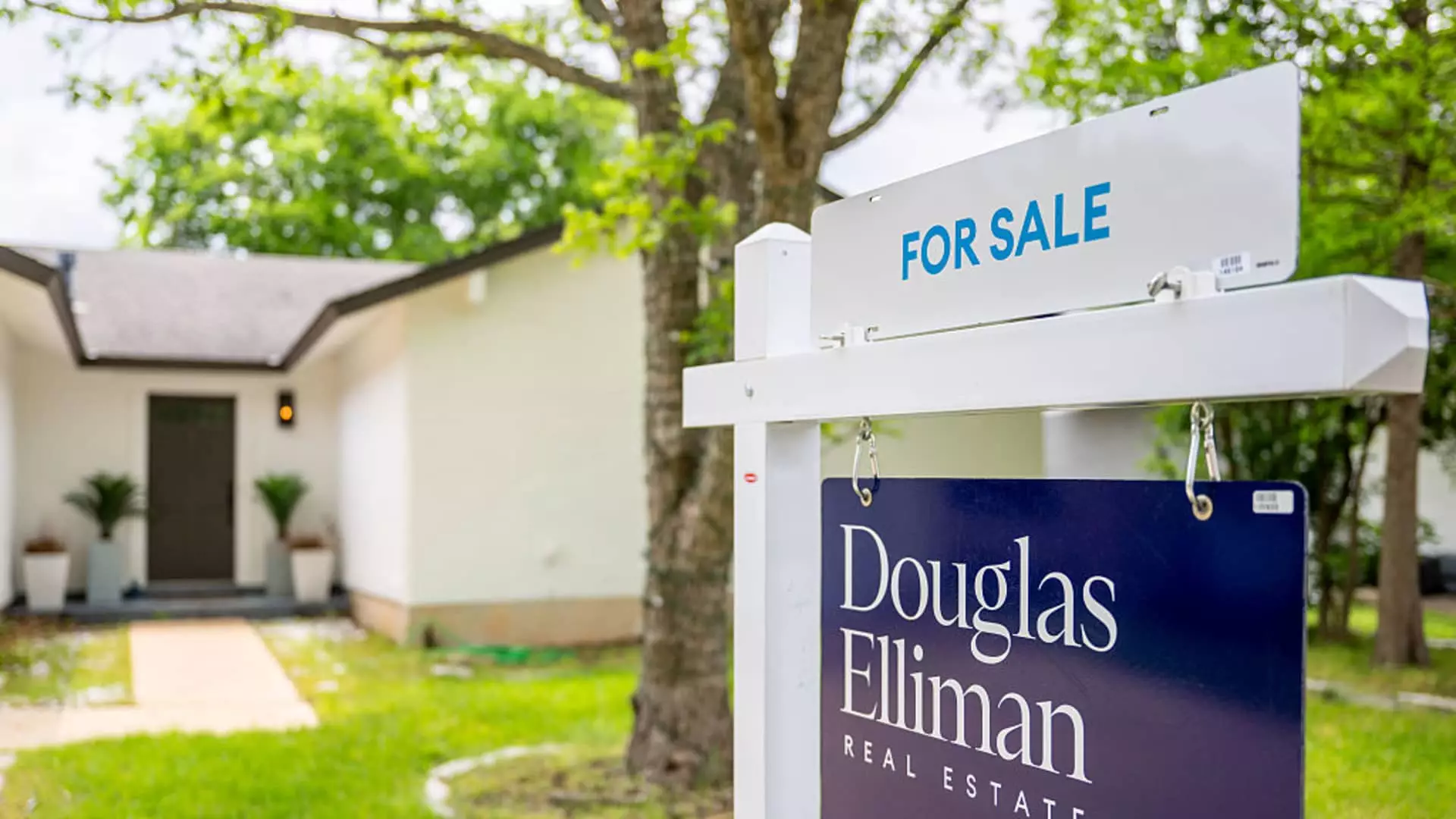The recent statistics surrounding previously owned home sales suggest a sector grappling with stagnation in a time that demands consumer confidence and economic resilience. May experienced a modest uptick of 0.8% in home sales, reaching an annualized rate of 4.03 million units, according to the National Association of Realtors (NAR). While this slight growth might be interpreted as a positive signal, the broader context is one of disappointment, particularly as predictions had anticipated a more significant downturn of 1%. The disheartening reality is underscored by a staggering 0.7% decrease compared to May of the previous year, revealing that the market’s pace is not accelerating in a landscape that needs revitalization.
Regional Disparities: A Tale of Two Markets
Diving deeper, the performance of different regions highlights troubling disparities that reflect broader economic inequities. The Northeast exhibited a robust increase, rising 4.2% month-to-month. In contrast, the West, often viewed as a benchmark due to its status as the most expensive region in the country, saw sales plunge by 5.4%. This divergence poses significant questions about affordability and accessibility in various demographics and geographical locations. The enduring high prices in the West create substantial barriers for average buyers, further elongating the housing crisis.
These regional trends reveal a potentially emerging crisis in the housing market. If areas like the West continue to suffer from a decline in sales, it may signal an alarming retreat from homeownership in regions that historically attracted a diverse array of buyers, including families and young professionals. These shifts hold profound implications for communities, such as the promotion of socio-economic homogenization, where only affluent buyers can thrive, and vital community diversity erodes.
The Mortgage Rate Conundrum
The looming specter of high mortgage rates is a substantial hindrance to home sales and ultimately stifles consumer engagement. After maintaining a steady rate in March, the average rate on a 30-year fixed mortgage spiked over 7% in April, causing considerable reverberations throughout the market. In an environment where homeowner costs continue to rise, potential buyers are understandably hesitant to commit. Economic experts, including Lawrence Yun from NAR, echo this sentiment, suggesting that only a decrease in mortgage rates could entice more buyers back into the market. These economic barriers risk exacerbating the divide between those who can afford to buy homes and those who remain perpetually excluded from the prospect of ownership.
Price Pressures and Inventory Issues
One of the more perplexing aspects of the recent data is the striking inconsistency between increasing sales and home prices. Despite a notable rise in housing inventory—up over 20% compared to last year, resulting in a 4.6-month supply—home prices remain resilient. The median price of an existing home reached a record high of $422,800 for May, presenting yet another barrier for prospective buyers. With nearly 28% of homes selling above their list price, the market still showcases fierce demand despite the evident constraints. Thus, the available inventory isn’t enough to shift the price trajectory, indicating deeper systemic issues.
In today’s market, the increasing number of higher-end sales stands out, which complicates the narrative for those in the lower-income brackets. While it may appear that high-end homes are thriving, the decline in the $1 million-plus category signals a troubling shift. The situation becomes alarming when one considers that only 30% of buyers were first-time owners, down from last year’s figures. This data unveils an unsettling truth: many potential buyers, especially first-time homeowners, are being left behind as the market develops in favor of wealthier clientele.
The Long Wait: Implications for Buyers
Moreover, homes are lingering on the market longer than in previous years, with average selling times now reaching 27 days, compared to just 24 days the previous year. For many buyers, this shift could translate into missed opportunities as the window of affordability narrows with rising prices and stagnant wages. The fact that 27% of transactions were all-cash sales, an increase from the previous year, emphasizes a disturbing trend where only cash-rich buyers can capitalize on current market conditions.
The latest findings amplify the urgency for systemic reforms throughout the housing market. The combination of high mortgage rates, inflated prices, and shifting regional dynamics creates a volatile environment that is challenging any aspirations for homeownership, especially among first-time buyers. The growing supply is of little consolation when prices remain rising, thus impairing the hope for a secure future that many Americans aspire to. What we need is not just minor adjustments but a significant reevaluation of our approach to ensuring affordable housing for all.



Leave a Reply